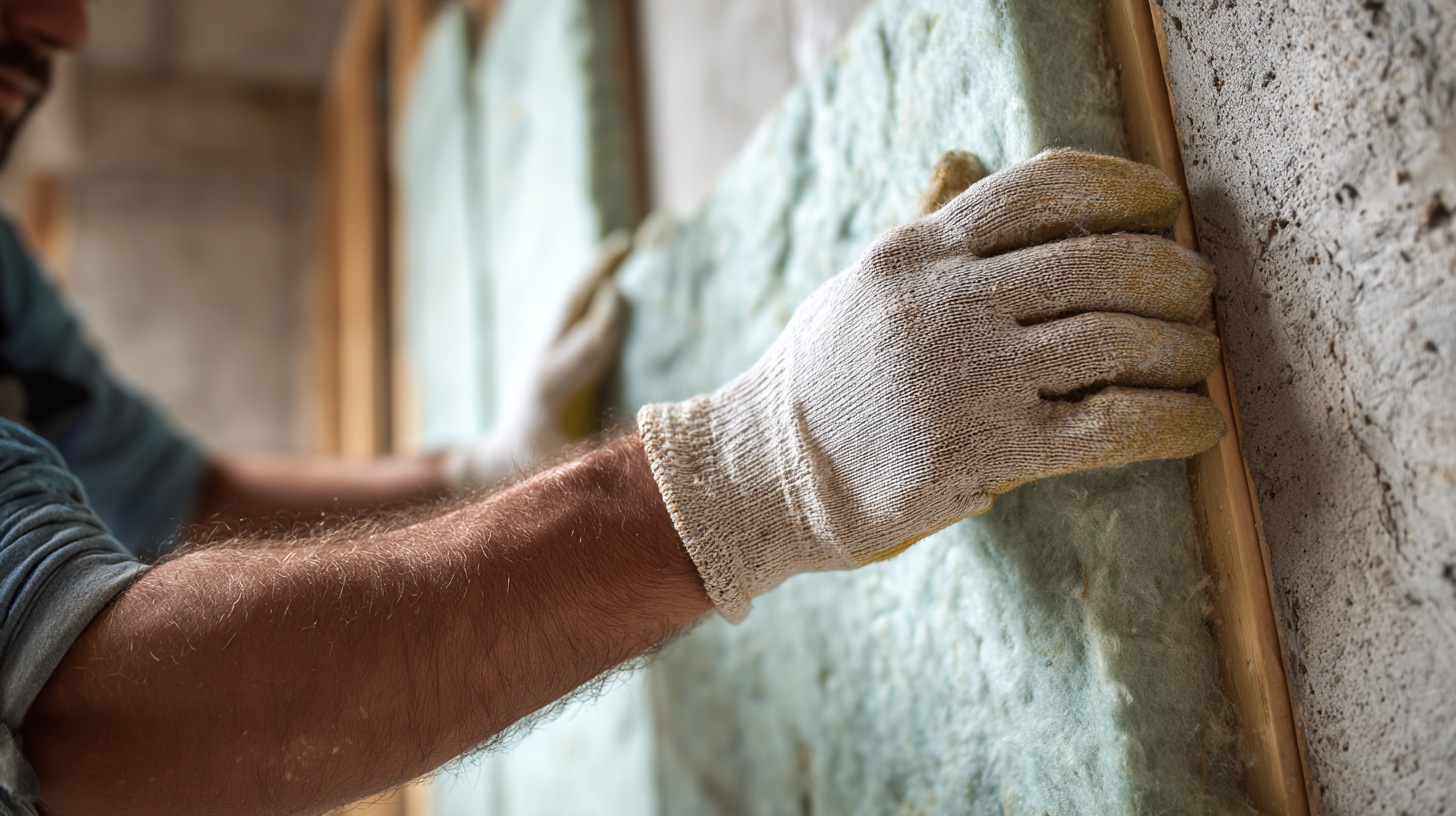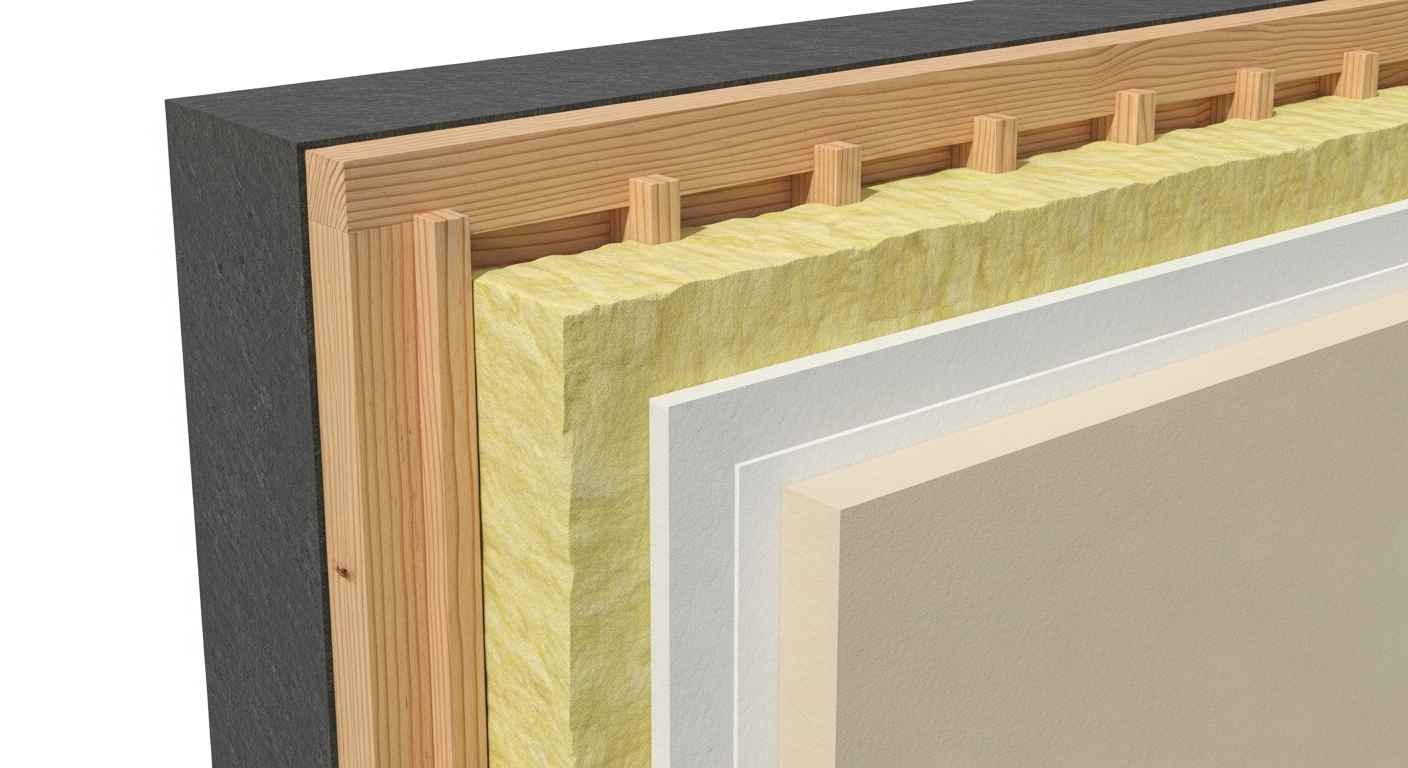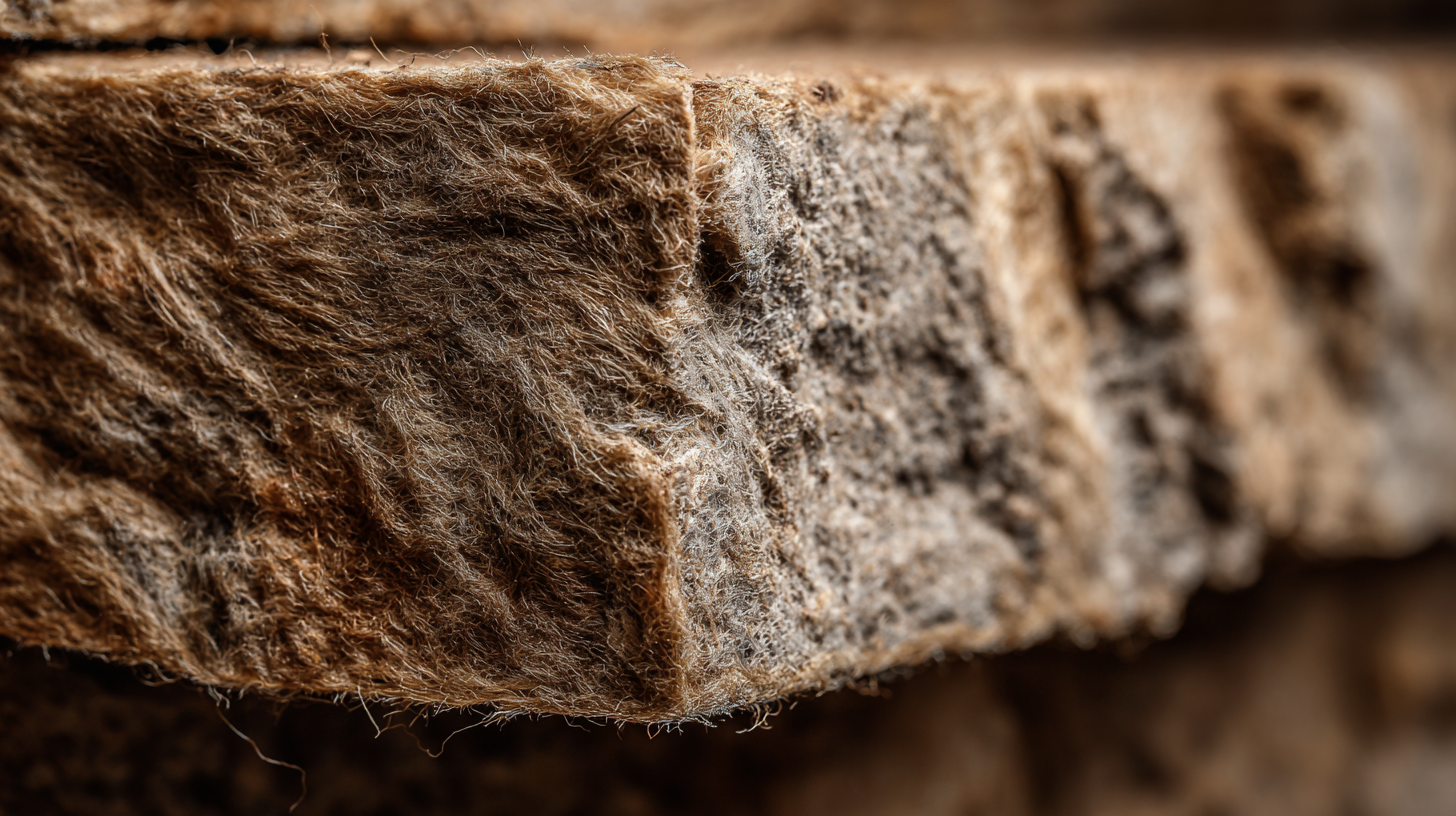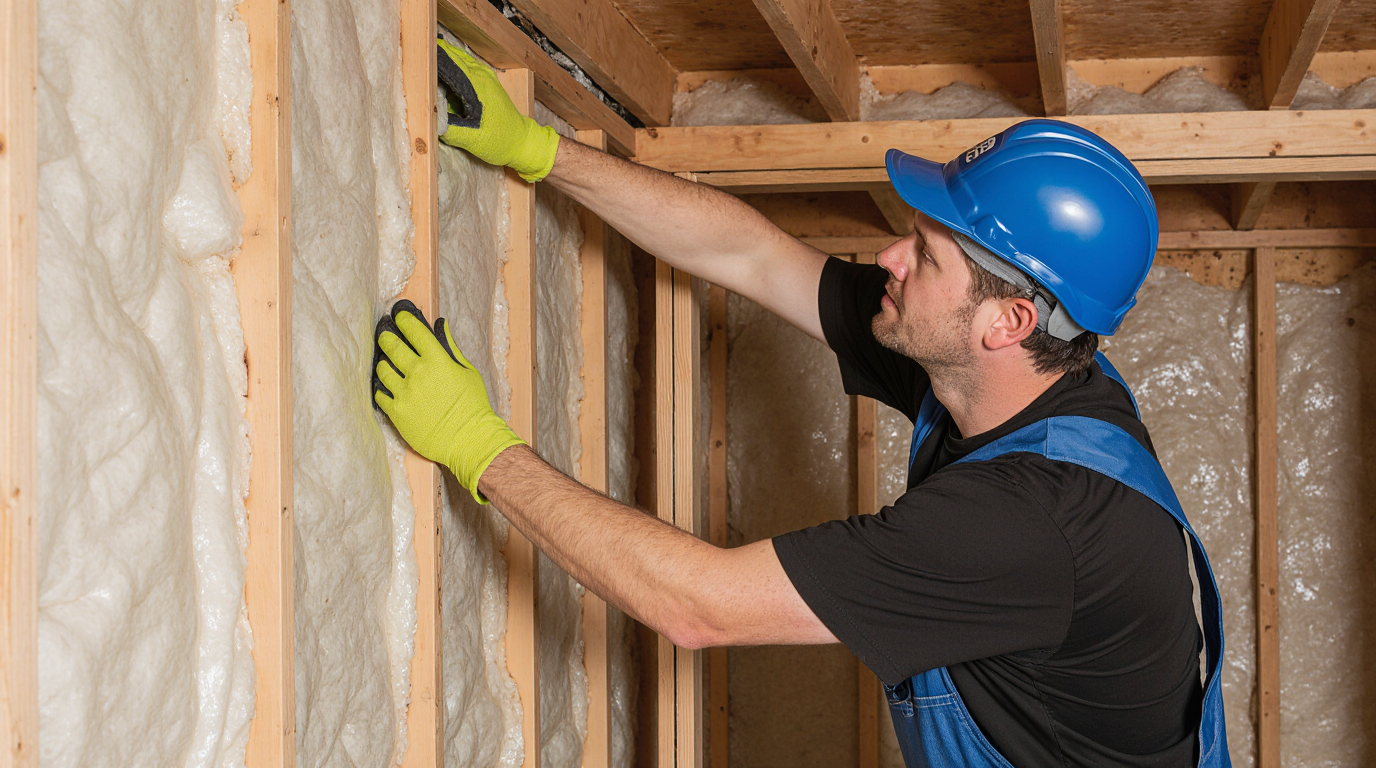
When people talk about home comfort, they often mix up two very different things - thermal and acoustic insulation. It's easy to see why. Both help create a more comfortable, peaceful space. Both involve layers of material hidden inside your walls, floors, or ceilings. But while they might look the same, they don't always do the same job.
At Sound Pro Solutions, we work with both thermal and acoustic insulation every single day - from studios and offices to homes and commercial buildings across the U.S. We often hear the same question from customers: "If I soundproof my space, will it also help with temperature control?" This article clears that up.
In this guide, we'll walk you through what each type of insulation actually does, where they overlap, and which materials give you the best of both worlds. By the end, you'll know exactly how to choose what's right for your space.
Acoustic and Thermal Insulation Meaning
Let's start with the basics.
What is acoustic insulation?
Acoustic insulation is all about sound. It's designed to block, absorb, or dampen sound waves traveling through walls, ceilings, and floors. Imagine a recording studio - you can scream inside it, and no one outside hears a thing. That's because the walls are packed with materials that trap sound energy and keep it from passing through.
In everyday spaces, acoustic insulation helps you sleep better in a noisy neighborhood, enjoy quiet meetings in an office, or stop echo in an open-plan living room. It reduces unwanted noise - footsteps, voices, machinery - by turning sound energy into tiny vibrations that die out inside dense materials. That's what acoustic insulation's meaning really comes down to: control over sound.
What is thermal insulation?
Thermal insulation, on the other hand, deals with heat. It slows down the transfer of heat between indoors and outdoors. Think of it as a temperature buffer - it keeps your home warm in winter and cool in summer. Materials like fiberglass, spray foam, and rigid boards trap tiny pockets of air that resist heat flow, reducing the amount of energy needed for heating or cooling.
The key difference?
Purpose. Acoustic insulation controls sound waves. Thermal insulation controls heat transfer. They work on different principles - one blocks vibration, the other resists conduction - yet both use density and structure to do their job.
So why do people confuse them? Because some materials can handle both functions to a degree. Rockwool, for example, insulates against heat and sound. But not all products can. If you pick the wrong one for your main goal, you might waste time and money without solving the actual problem.
Does Acoustic Insulation Have Thermal Properties?

That's a great question - and one we get almost every day. The short answer is sometimes.
Some materials that block sound also provide good temperature control. But others don't. It depends on density, air flow, and how the product is installed.
Take mineral wool (also called rockwool). It's one of the few materials that performs well in both categories. It's dense enough to block airborne noise while its fibrous structure traps air and slows heat transfer. The same goes for fiberglass, a versatile material found in both acoustic and thermal applications.
However, not all acoustic insulation has thermal benefits. For example, acoustic foam panels - those stylish gray or colored squares you see in studios - are amazing at absorbing echoes and reflections, but they don't keep your room warmer. They're too light and porous to make a big difference in heat retention.
The same applies in reverse. Some thermal products, like spray foam insulation, are excellent for controlling heat but don't do much for noise reduction. They create airtight seals, not sound barriers.
So, does acoustic insulation have thermal properties? Yes - when it's dense, fibrous, and continuous enough to resist air movement. But not all materials meet those conditions. The trick is knowing which ones deliver both results before you install them.
Materials That Provide Thermal and Acoustic Benefits

Now let's look at which materials actually pull double duty.
Mineral Wool (Rockwool)
This is the superstar. It's made from volcanic rock spun into fibers, offering excellent fire resistance, sound absorption, and temperature control. It's dense, durable, and ideal for both sound and thermal insulation in walls, ceilings, and floors.
Fiberglass
The classic insulation found in most American homes. Fiberglass is lightweight yet efficient for heat retention. In acoustic terms, it's effective at reducing mid to high-frequency sounds, though not as dense as mineral wool. Still, it's a solid option if you're balancing budget and performance.
Cellulose
An eco-friendly option made from recycled paper treated for fire resistance. It performs moderately in both areas - decent thermal control, fair sound absorption. Perfect for retrofits and attic spaces.
Mass Loaded Vinyl (MLV)
A heavyweight acoustic barrier that blocks sound transmission through walls or floors. Incredible for noise, useless for temperature. If you're building a home theater, this is your friend.
Acoustic Foam
Great for improving room acoustics and reducing echo, but does almost nothing for heat. It's for sound quality, not energy efficiency.
Spray Foam & Rigid Foam Boards
These are thermal powerhouses. They seal gaps and prevent drafts like nothing else, but they don't stop sound well. You'll feel warmer, but you'll still hear your neighbor's TV.
Here's a quick summary for clarity:
|
Material |
Soundproofing |
Thermal Control |
Ideal Use |
|
Rockwool |
Excellent |
Excellent |
Walls, studios, mechanical rooms |
|
Fiberglass |
Good |
Good |
Home walls, ceilings, attics |
|
Cellulose |
Moderate |
Moderate |
Attics, retrofit projects |
|
MLV |
Excellent |
Poor |
Walls, floors, industrial spaces |
|
Acoustic Foam |
Excellent (echo) |
Poor |
Studios, offices |
|
Spray Foam |
Poor |
Excellent |
Energy-efficient walls |
|
Rigid Foam |
Poor |
Excellent |
Exterior walls, roofs |
When you're choosing thermal and acoustic insulation materials, look at the density and structure first. The denser the product, the better it handles sound. The more trapped air it has, the better it handles heat. Only a few - like rockwool - strike that perfect balance.
How to Choose - Thermal, Acoustic, or Both?

Choosing between thermal and acoustic insulation always starts with one simple question: what's your main problem - temperature or noise?
If your space feels drafty or uncomfortable no matter the season, you're dealing with heat loss. That means thermal insulation should come first. But if the real issue is noise - traffic outside, footsteps above, or loud conversations through the walls - your focus needs to be on acoustic performance.
A home office, for example, benefits most from materials with strong sound-blocking ability. Rockwool or fiberglass not only helps reduce outside noise but also retains warmth, keeping your workspace quiet and comfortable. In a recording studio, sound is everything. Acoustic insulation becomes the priority, and layered systems with dense panels or MLV deliver the best results. Any thermal gain you get is simply a pleasant bonus.
For an attic or crawl space, the situation reverses. The goal is to stabilize temperature and reduce energy loss. Here, thermal insulation does the heavy lifting, though fiberglass or cellulose can still slightly soften noise. And if you live in a multifamily building or duplex, you'll want both. Shared walls and ceilings can easily transmit sound and lose heat at the same time, so a balanced solution - like mineral wool or a hybrid system - gives you comfort and quiet together.
The biggest mistake many people make is assuming that thermal insulation will automatically soundproof their home. It won't. Spray foam or rigid boards are perfect for sealing air leaks, but poor at blocking sound vibrations. To achieve real peace and comfort, you need materials designed for both dense, fibrous, and carefully installed. That's the secret to getting it right the first time.
Here's a simple decision guide:
|
Your Main Issue |
Best Focus |
Example Material |
|
Heat loss / energy bills |
Thermal |
Spray foam, rigid foam |
|
Noise from outside |
Acoustic |
Rockwool, MLV |
|
Both comfort and quiet |
Combined |
Rockwool, fiberglass, cellulose |
In short, thermal insulation keeps you comfortable; acoustic insulation keeps you sane. If you can get both in one product, even better.
Professional Solutions
Insulation isn't one-size-fits-all. Some projects can be handled with DIY materials; others need professional evaluation.
If you're building a small home studio, office, or quiet reading corner, you can often manage with DIY panels, acoustic foam, or pre-cut insulation boards. These are easy to install and don't require special tools.
But when the goal is full sound isolation - like in recording spaces, restaurants, or multi-room offices - it gets much more complex. Sound travels not only through walls but also through floors, ceilings, ducts, and even structural gaps. That's where you need an acoustic assessment and the right combination of barriers, absorbers, and decoupling techniques.
This is where Sound Pro Solutions comes in.
We help clients across the U.S. choose the right materials for their goals - whether that's controlling temperature, cutting down echo, or completely isolating noise. With decades of hands-on experience, we've seen what works, what doesn't, and why.
Our catalog includes high-performance products such as Mass Loaded Vinyl, Green Glue, acoustic door seals, and mineral wool panels - all tested for real-world results. Each item on soundprosolutions.com comes with detailed specs, so you know exactly what to expect before you start your project.
We understand that not every space or budget is the same. That's why we help customers design custom insulation systems - whether you're building a podcast room in your garage or upgrading a hotel's soundproofing. The goal is always the same: reliable performance, long-term value, and peace of mind.
Recent posts




